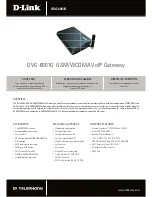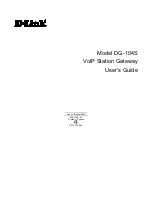
Rule number simply tells you where you're at on the list of register maps. Click "next" and "prev" to scroll
through the list. To advance directly to a specific map, enter the desired number in the "Map #" box, then
click Update.
For each remote register to be read, enter the register type, format, number, and location (device). The
names in the device list are defined in the Devices page.
When the remote register is read, data may be manipulated before being written to the local object. If a
bit mask is entered (in hexadecimal), and the remote register type is signed or unsigned (16-bit data), the
mask will be bit-wise logical AND-ed with the data, and the retained bits will be right justified in the result.
The result will then be multiplied by the scale factor. The offset is then added and this final result is
written to the local object number given. The name is optional and used only for display purposes.
The periodic poll time determines how often the remote register will be read. This number, if nonzero, will
override the default poll time given in the Devices page for the remote device being read.
The default value will be stored into the local object after the given number of read failures if the fail count
is non-zero. Setting the count to zero will disable the default, and the object will retain the most recent
value obtained.
Delete will remove the rule number shown in the "Map #" box. Insert will insert a new rule before the rule
number shown, and is used for placing rules between existing rules. It is not necessary to use Insert to
add rules to the bottom of the list or to define any rule presently having zero for a source object or
"none" for remote type.
Selecting "none" for remote type effectively deletes the rule even though it will still appear in the list until
deleted. Unused rules at the end of the list will always show none as the type. If you wish to prevent these
from being displayed, reduce the number of rules enabled.
Initial COV increment and period will only apply if a BACnet client subscribes to COV notification from the
BACnet object assigned to this Modbus map. These properties may be overwritten by the BACnet client(s)
at any time. The values shown here are initial values, not necessarily the current values. (Note: COV
increment only applies to Analog objects, all changes are reported for Binary or Multistate objects.)
Units default to no_units, but you may select any of the available BACnetEngineeringUnits values. This
value will simply be read by the BACnet client when the units property is requested from the object this
Modbus register maps to. The units have no bearing on calculations performed. You must select
appropriate scale and offset values to make any required translation between Modbus units and BACnet
units. Units are only valid for Analog objects.
The number of rules enabled simply limits the scope of rule review so that you do not have to review a lot
of unused rules. If the displayed rules are used up and you need more, increase the enabled number.
6.3 Modbus TCP Client Write Maps
6. Configuring BB2-7010 as a Modbus TCP Client
file:///C:/AAA_CSI/Literature/2015 User Guides/BB2-7010/BB2-7010 ...
4 of 8
10/16/2015 12:32 PM
















































